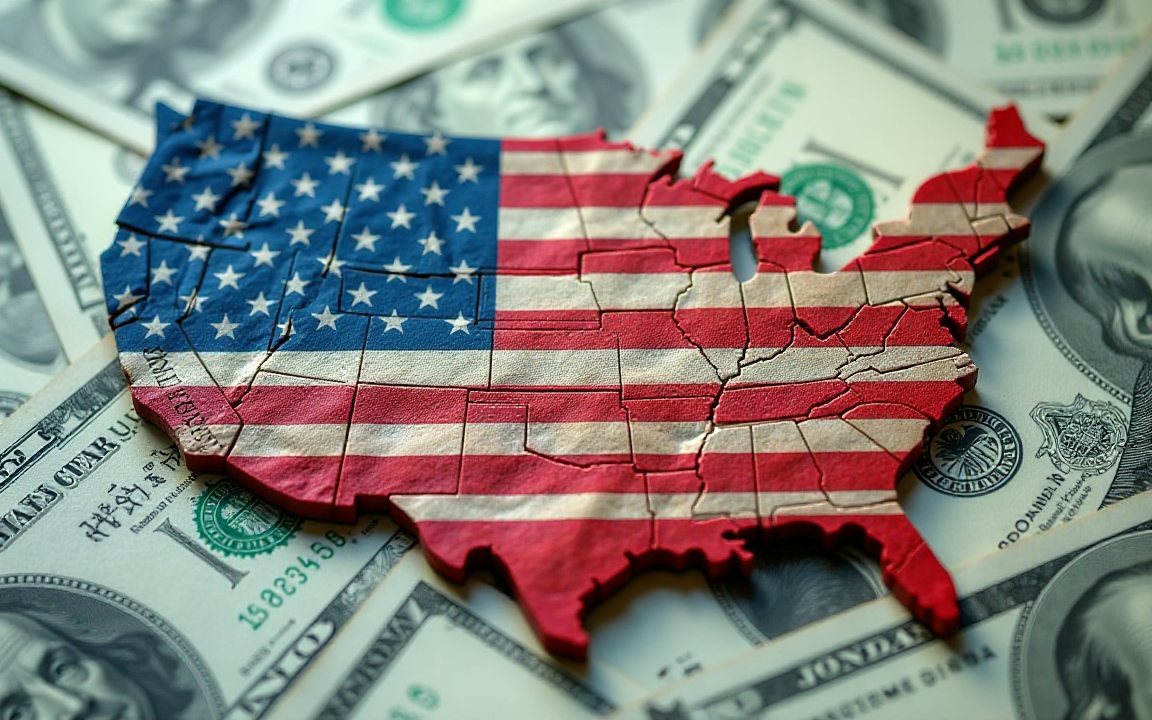
The United States may face renewed market turbulence this week after Moody’s Investors Service stripped the country of its last triple-A credit rating, citing an unsustainable fiscal trajectory and lack of political consensus to address mounting debt.
The downgrade, announced on Friday, marks the final blow from the big three ratings agencies — following earlier cuts by S&P in 2011 and Fitch in 2023 — and comes amid growing alarm over the $36 trillion national debt and persistent budget deficits.
Moody’s lowered the rating by one notch to AA1 and issued a stark warning about long-term fiscal deterioration.
Concerns mount over deficits and political gridlock
In its statement, Moody’s highlighted the lack of credible measures by successive US administrations and Congress to rein in soaring deficits.
“Successive US administrations and Congress have failed to agree on measures to reverse the trend of large annual fiscal deficits and growing interest costs. We do not believe that material multiyear reductions in mandatory spending and deficits will result from current fiscal proposals under consideration,” Moody’s said.
“We expect larger deficits as entitlement spending rises while government revenue remains broadly flat,” the agency said.
“Persistent, large fiscal deficits will drive the government’s debt and interest burden higher.”
The downgrade arrives at a politically fraught moment.
Former President Donald Trump’s latest tax proposal — dubbed “one big, beautiful bill” — was blocked by rightwing lawmakers last week, but still looms as a potential fiscal flashpoint.
Economists warn that making Trump’s previous tax cuts permanent would add trillions to the deficit over time.
Treasury Secretary Scott Bessent downplayed the downgrade during an interview on NBC’s Meet the Press, calling Moody’s a “lagging indicator.”
Still, the shift has sharpened focus on the fragile balance between economic growth, fiscal credibility, and political partisanship.
Will markets head lower on Monday?
While previous downgrades triggered sharp sell-offs in global markets — notably in 2011 when the S&P 500 plunged over 6% after the S&P downgrade — early signs suggest that the immediate market reaction to Moody’s decision may be less dramatic.
US stock futures indicated that markets would decline about 1% when they begin trading in the United States on Monday morning.
Nasdaq futures fell 0.38% and gold ticked higher by 0.27% in weekend trading, according to IG analyst Tony Sycamore.
In Asia, South Korea’s Kospi and Taiwan’s Taiex each fell more than 1% on Monday, while Tokyo and Hong Kong markets declined around 0.5%.
The US dollar weakened further against the euro and yen, while treasury yields climbed, with the 10-year bond rising to 4.51% in early Asian trading, up from 4.44% on Friday.
Some investors anticipate further upward pressure on yields as the downgrade prompts buyers to demand higher compensation for perceived risk.
“There may be more selling pressures,” said Tracy Chen of Brandywine Global.
“The downgrade may indicate that investors will demand higher yields on treasuries.”
Still, others believe regulatory rules and central bank operations will limit the fallout.
Toby Nangle, former global head of asset allocation at Columbia Threadneedle, noted that AA1-rated assets are treated similarly to triple-A ones for capital adequacy purposes.
“From a mechanical perspective, the downgrade almost certainly doesn’t matter,” he wrote in the Financial Times.
Debate over credibility and consequences intensifies
The downgrade has also reignited partisan tensions.
White House communications director Steven Cheung criticised Moody’s, alleging that economist Mark Zandi — often quoted in press coverage — had political motives.
“He’s been a Never Trumper since 2016,” Cheung claimed.
However, Zandi is affiliated with Moody’s Analytics, a separate entity from the credit ratings division.
In the broader financial world, some remain skeptical that the downgrade changes the fundamental status of US debt.
“Let’s get real,” said Stephen Innes of SPI Asset Management.
“If there’s one asset on this planet with the least chance of default, it’s a US Treasury bond.”
Innes and others note that the United States issues debt in a currency it controls and continues to enjoy the privilege of printing the world’s primary reserve currency.
“It’s not moral hazard — it’s just an operational fact,” he added.
Outlook uncertain amid fiscal strain and political inertia
The implications of the downgrade may extend beyond Washington.
Analysts warn that the spotlight may soon turn to other heavily indebted nations such as Japan, where debt-to-GDP ratios are among the highest in the world.
The move could force global investors to reassess sovereign risk more broadly, especially in an environment of high global interest rates.
With presidential elections on the horizon and lawmakers locked in budgetary standoffs, the downgrade may further constrain Washington’s room for maneuver.
Investors and analysts will watch closely in the coming days for signs of deeper financial stress — or whether, as some expect, markets will simply absorb the blow and move on.
Regardless of the near-term impact, Moody’s move underscores the long-term risks posed by political stalemate and rising debt — risks that markets may increasingly be forced to reckon with.
The post Moody’s downgrades US credit rating: what to expect of markets on Monday? appeared first on Invezz

